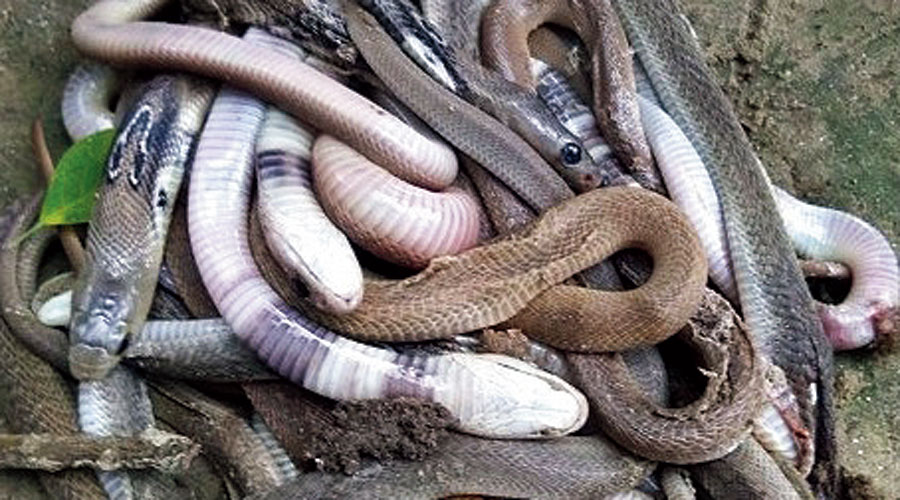A bunch of cobras was allegedly beaten to death at a village in Nadia on Thursday.
The owner of the house where the snakes were allegedly killed was picked up by the forest department but released later since “he was not in the house at the time of the incident”, said an official.
Another person, who the official said was the “prime suspect”, had uploaded pictures of the dead snakes on Facebook. He is allegedly absconding.
The carcasses were allegedly burnt before a team of forest officials could reach the spot. The picture suggests the snakes were spectacled cobras (Naja naja), distinguished by horseshoe-like hoods.
The other type of cobra found in India is monocled or monocellate cobra (Naja kaouthia), with an O-shaped hood.
Both species are venomous. “A just-born snake with a small venom gland is lethal enough to kill an adult. An adult spectacled cobra releases over 150mg venom in each bite. But they do not attack unless provoked,” said a forest official. Both cobras are protected under Schedule II Part II of the Wildlife (Protection) Act, 1972.
A tiger is protected under Schedule I. However, the killing of a cobra is treated the same way as the killing of a tiger and carries a maximum punishment of seven years in jail.
The alleged killings happened at a village called Mahish Nangra, around 8km from Krishnagar town and 120km from Calcutta. A man posted pictures of a group of snakes, a stick wielded over them. Another picture shows what looks like lifeless bodies of the reptiles.
“Killed nine snakes at 2pm at ….,” says the post, mentioning the name of the man at whose house the reptiles were “killed”.
Subhasish Ghosh, the additional divisional forest official of Nadia who went to the spot, said: “The bodies were burnt before we reached the spot. We picked up the owner of the house. He works on daily wage. He said he was not present when the killings happened. A preliminary probe suggests the same. We released the man after he gave a written undertaking of cooperating in the probe.”
An FIR has been filed against the man who posted the pictures on Facebook.
The snakes looked like babies, he said. Another forest official said March and April were the breeding months for snakes and July was the time when eggs started hatching.
Anirban Chaudhuri, who has been working to rehabilitate reptiles for over two decades, said: “We get more rescue calls than what we used to. The forest department, too, is flooded with rescue calls every day.”











